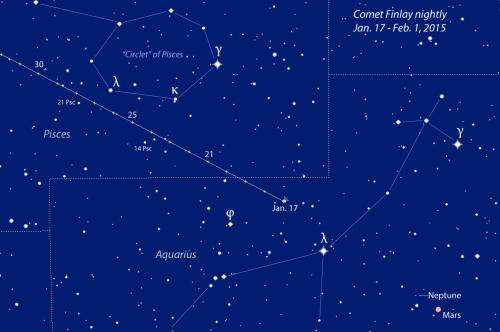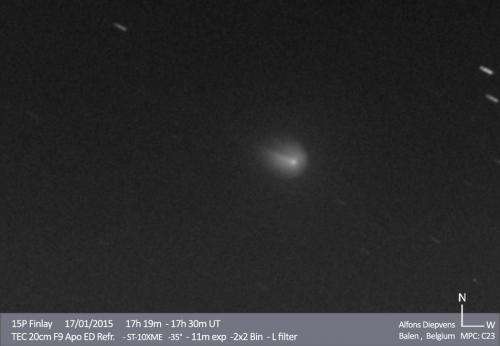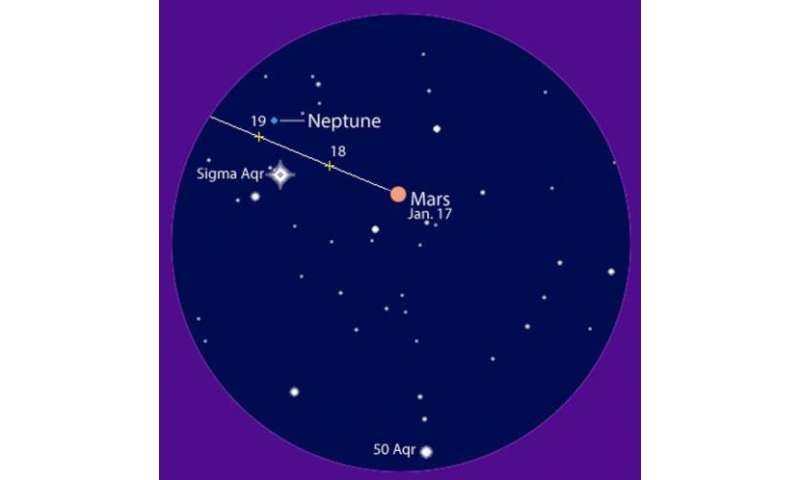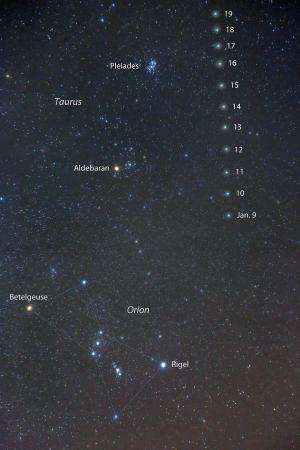Comet Finlay surprise outburst visible in binoculars

Lost sleep at night, fingers tapping on the keyboard by day. Darn comets are keeping me busy! But of course that's a good problem. Comet 15P/Finlay, which had been languishing in the western sky at dusk at magnitude +10, has suddenly come to life … for a second time.
Two nights ago, Australian comet observer Michael Mattiazzo took a routine picture of Finlay and discovered it at magnitude +8. Today it's a magnitude brighter and now joins Comet Lovejoy as the second binocular comet of 2015. Comet-wise, we've gone from zero to 60 and the new year's fewer than 3 weeks old!
Comet Finlay's threw its first tantrum last December when it reached binocular visibility (faintly) shortly before Christmas. Discovered by William Henry Finlay from South Africa on September 26, 1886, the comet circles the Sun every 6.5 years. This time around it reached perihelion on December 27th and spent many nights near the planet Mars low in the western sky. Until the new outburst, the comet had returned to its predicted brightness (~10 magnitude) and departed company with the Red Planet.
It's still low in the west, though not quite so much as in December, in the constellation Aquarius. With an orbit inclined only 6.8° to the ecliptic or plane of the Solar System, you'll find it chugging eastward across the zodiac at the rate of 1° per night. The best time to view the comet is at the end of evening twilight at nightfall when it's highest— 20° to 25° above the southwestern horizon.
Right now it's not far from Lambda Aquarii and will soon glide just south of the well-known asterism called the "Circlet" in Pisces. Currently between 7th and 8th magnitude and showing a bright, condensed center, Comet Finlay is easily visible in 10×50 binoculars. Catch it while you can. These outbursts often fade fairly quickly. While we don't know its exact cause, what likely happened is that a new fissure opened up on the comet's surface, exposing fresh ice to sunlight. Rapid vaporization of the new material may be behind the eruption.

While Comet Q2 Lovejoy's been getting all the attention, Finlay's back in the game and making mid-January nights all that more enjoyable for sky gazing. Lovejoy is presently passing near the Pleiades star cluster in Taurus. This coming week will be the last dark one before the Moon starts to spoil the view. I hope you're able to spot both at the next opportunity.
While we're on the topic, take another look at the finder chart and you'll see that Mars lies very near Neptune. The two are presently about 2° apart but on Monday Jan. 19th at dusk they'll be separated by just 12 arc minutes or 1/5 of a degree and easily fit into the same medium-power view of a telescope. Pretty cool – and well worth seeing along with those comets!
-

5-degree binocular view of Mars as it approaches Neptune in the next few nights. They’ll be in close conjunction on the 19th. Mars shines at about 1st magnitude, Neptune at 8. Stars shown to mag. 9. Credit: Chris Marriott’s SkyMap software -

Comet Lovejoy seen in tandem with the beautiful Pleaides star cluster on January 15th. Click for a finder chart. Credit: Bob King
Source: Universe Today























